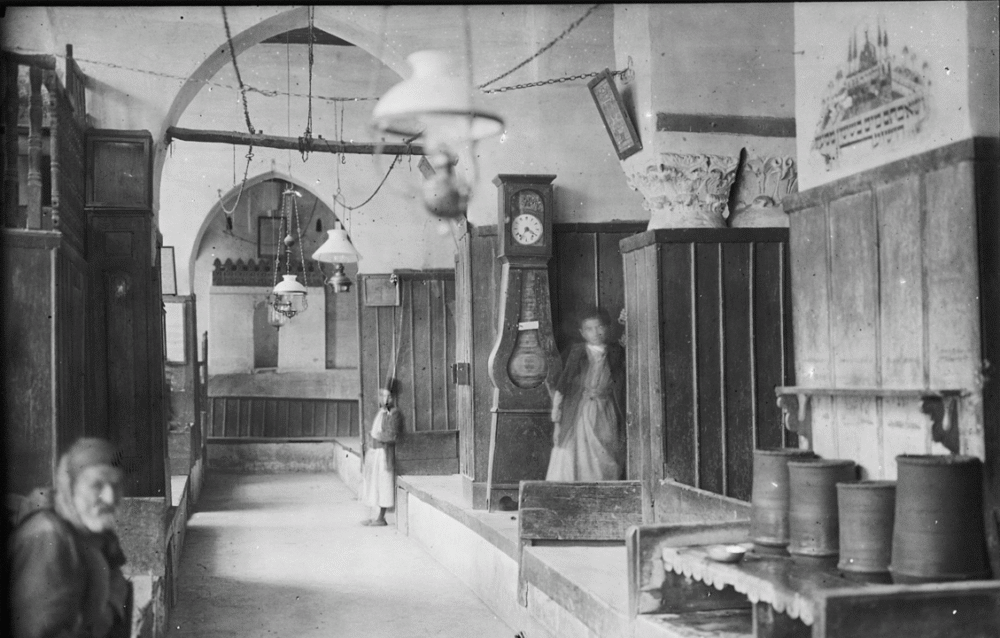Reimagining Home: Syrian Jews, Memory and a Future of Peace

There was a time when Syria sounded different.
You could walk through the narrow alleys of old cities and hear church bells ring near minarets, and sometimes, if you listened closely enough, Hebrew prayers echoed through the streets. Those sounds are gone now. Not by accident but by absence—the kind of silence that settles after families disappear, communities fracture and history is pushed to the margins.
For decades, the story of Syria’s Jewish community hasn’t been told enough. It’s been tucked away—forgotten by some, avoided by others. But forgetting doesn’t mean it’s gone.
I was born in the United States, but I spent much of my childhood in Idleb—a city in northwestern Syria near the Turkish border—in courtyards filled with jasmine, around elders who told stories that always felt a little sacred. They spoke with kindness in memory of Jewish neighbors, even if those neighbors had long since left.
This year, I finally went back to Syria, having been barred from returning for the past decade and a half. I stood in the streets of Idleb, Aleppo and Hama, streets I had once known as a boy. And I realized how much I missed—and how much was missing.
That experience made something clear: If I, as a Syrian Muslim, feel this deeply about returning, imagine how Syrian Jews must feel—those whose families lived in Aleppo, Damascus and Qamishli for centuries. Those who have not gotten the chance to go back. Some of them still speak Arabic. Some still keep the keys to homes they fled. Many carry the weight of memory, even if they’ve never set foot on Syrian soil.
The Jewish presence in Syria stretches back more than two thousand years, with communities in Aleppo, Damascus and Qamishli that flourished alongside Muslim and Christian neighbors. After the expulsion from Spain in 1492, many Sephardic Jews settled in Syria, enriching its cultural and religious life. By the early 20th century, there were tens of thousands of Jews living in Syria, but waves of emigration began with rising antisemitism and regional tensions. The 1947 Aleppo pogrom, followed by decades of government restrictions, surveillance and bans on travel and property ownership, accelerated the community’s departure. By the 1990s, nearly all of Syria’s Jews had emigrated, leaving behind only a handful of elderly individuals in Damascus.
This history matters. Syrian Jews were not outsiders. They helped build the cultural, spiritual and economic life of the country. They spoke the same language, wore the same clothes, sang the same songs as their Muslim counterparts. Their synagogues, now empty or crumbling, were once vibrant spaces filled with life.
But this isn’t just about the past. It’s also about what’s possible.
In recent years, countries like Morocco and the UAE have started acknowledging their Jewish heritage more openly. Synagogues are being restored. Jewish history is being taught again. Young people are learning that Judaism didn’t come from outside the region—it grew here.
So I ask: Why not Syria?
Of course, I know the obstacles. The politics are complex. Syria is in the process of recovering from sanctions. There’s no diplomatic path right now for something like this to take shape formally.
Earlier this year, a delegation of Syrian Jews from abroad was invited to Damascus, where they visited synagogues and cemeteries and were received by officials. The government expressed commitments to protect Jewish heritage sites and indicated symbolic support for reconnection, though the realities of conflict and instability mean a large-scale return is not yet feasible. Still, these gestures suggest the beginning of a new conversation about memory, belonging, and the possibility of return.
And just yesterday, as reported by The Times of Israel, Syrian President Ahmed al-Sharaa addressed a gathering of U.S.-based Syrians in New York, including eleven members of the area’s Syrian Jewish community. (Al-Sharaa will address the UN General Assembly on Wednesday, the first Syrian leader to do so in six decades.) This comes on the heels of a goodwill visit to Syria last week by a group of American Jews, organized by Syrian-American Joe Jajati, who Times of Israel Editor David Horovitz, who was on the trip, described as the grandson of a former leader of Syria’s Jewish community.
But healing doesn’t always start with governments. Sometimes, it starts with a conversation. A photo. A family recipe shared across generations. A visit, even by a single person.
We don’t need to fix everything at once. We can start small: document stories, preserve cemeteries, rebuild trust. These are not dramatic gestures—but they’re meaningful ones.
I created Salam Home for that reason. Salam Home is a heritage diplomacy initiative dedicated to advancing Jewish–Arab reconciliation—especially with Jews of Syrian descent—through cultural memory, dialogue and restoration. We believe peace begins with understanding, and understanding begins with returning to the stories, spaces and spiritual homes that shaped us all. With exploring what it means to return, even if just through memory. I’ve met Syrian Jews in Brooklyn, Mexico City and Jerusalem who still carry pieces of Syria with them. What they’ve told me is simple: “We remember.”
This vision isn’t only for the Jewish diaspora. It’s for Syrians, too—for anyone who wants to believe that their country is more than just its recent tragedies. What if Syria could hold space for all its stories again?
When the time comes—and I believe it will—that Syria begins to reconnect with the region and the world, I hope memory and restoration are part of that process.
To my Jewish brothers and sisters who trace your roots to Syria: You are not forgotten. And to Syrians everywhere: We don’t have to bury our past to imagine a future. We can make this happen through cultural and heritage diplomacy.
This isn’t about going backward.
It’s about returning with grace.
And maybe, that’s where peace begins.
Kalid Loul is a multidisciplinary entrepreneur and strategist whose work spans technology, AI, real estate and reverse logistics. He is also a senior leader at the Chicago-based Muslim American Leadership Alliance (MALA).
Top image: Interior of the Central Synagogue of Aleppo, 1908 by Ernst Herzfeld. Public domain.


